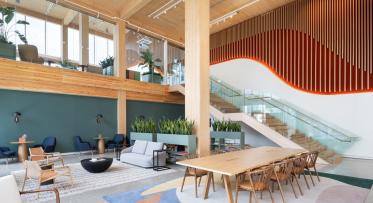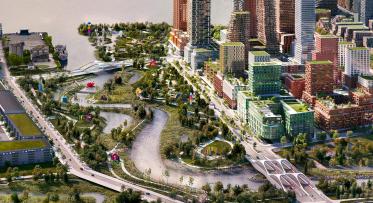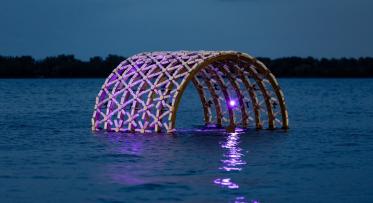Waterfront Toronto announces Steven Holl Architects to design District Energy Centre
Toronto, March 11, 2008 – Waterfront Toronto today announced the selection of Steven Holl Architects to design the District Energy Centre in the West Don Lands, which will provide centralized heating and cooling to the first new waterfront neighbourhoods.
"With the creation of the West Don Lands District Energy Centre, Waterfront Toronto is introducing this highly-sustainable technology to Canada in a visible and striking way through an iconic architectural expression of energy generation," said John Campbell, President and CEO of Waterfront Toronto. "This building will make a positive statement about the role of district energy in protecting the environment and educating the public about Waterfront Toronto’s efforts to build a green city."
Steven Holl Architects (SHA) is internationally-honored with architecture’s most prestigious awards, publications and exhibitions for excellence in design among which are two recent recognitions in the ‘10 Best Architectural Marvels’ of Time Magazine’s December 2007 issue.
Steven Holl Architects was selected for the District Energy Centre because of their design ability and their philosophy that sustainable building and site development is fundamental to innovative and imaginative design. Incorporating green roofs, double walls, and advanced mechanical systems, Steven Holl Architects constructed the New Residence at the Swiss Embassy according to Swiss "Minergie Standards," higher standards than the U.S. Council for Green Building's LEED standards for minimal energy consumption. In 2007 the Whitney Water Purification Facility and Park was chosen as one of the exemplary Top Ten Green Projects by the American Institute of Architects’ Committee on the Environment. The Whitney Water Purification Facility and Park (2005) features the largest green roof in Connecticut, zero off-site storm water discharge, expanded wetlands for biodiversity, and geothermal heating and cooling.
Steven Holl states: "The 21st century presents us with one-third of the earth already developed, much of it in sprawling waste. A fundamental change of attitude, a revisioning of values must take place. We hope to make the District Energy Centre a cultural and global symbol of sustainable development through an architecture that enacts the authentic connection of nature, society and humanity. The building will be inspiring in its design and excellent in its technical functioning."
As part of its mandate to make Toronto a global leader in sustainable development, Waterfront Toronto has committed to meeting all of the heating and cooling demands of its new waterfront neighbourhoods through a centralized district energy system. An interconnected network of underground pipes will extend to every development parcel in the new waterfront precincts, and all new buildings will be required to rely on this system, and will not be built with their own independent heating and cooling systems. Although initially these plants will be natural-gas fired, they will be designed for eventual conversion to alternative fuels when they become approved for urban use. Creating the centralized system now will, thereby, "future proof" the waterfront by allowing entire neighbourhoods to be easily switched to more efficient and sustainable sources of energy. While such district energy plants are common in parts of Europe and Scandinavia, they have not been introduced on a large urban scale in North America.
Chris McVoy, Senior Partner at Steven Holl Architects, states: "We are excited by the opportunity to weave public green space and sustainable infrastructure together as a new urban prototype".
The District Energy Centre is expected to go into construction by the end of 2008 in order to be ready to deliver heating and cooling to the first buildings by the beginning of 2010.
-30-
Media contact:
Marisa Piattelli, Waterfront Toronto




